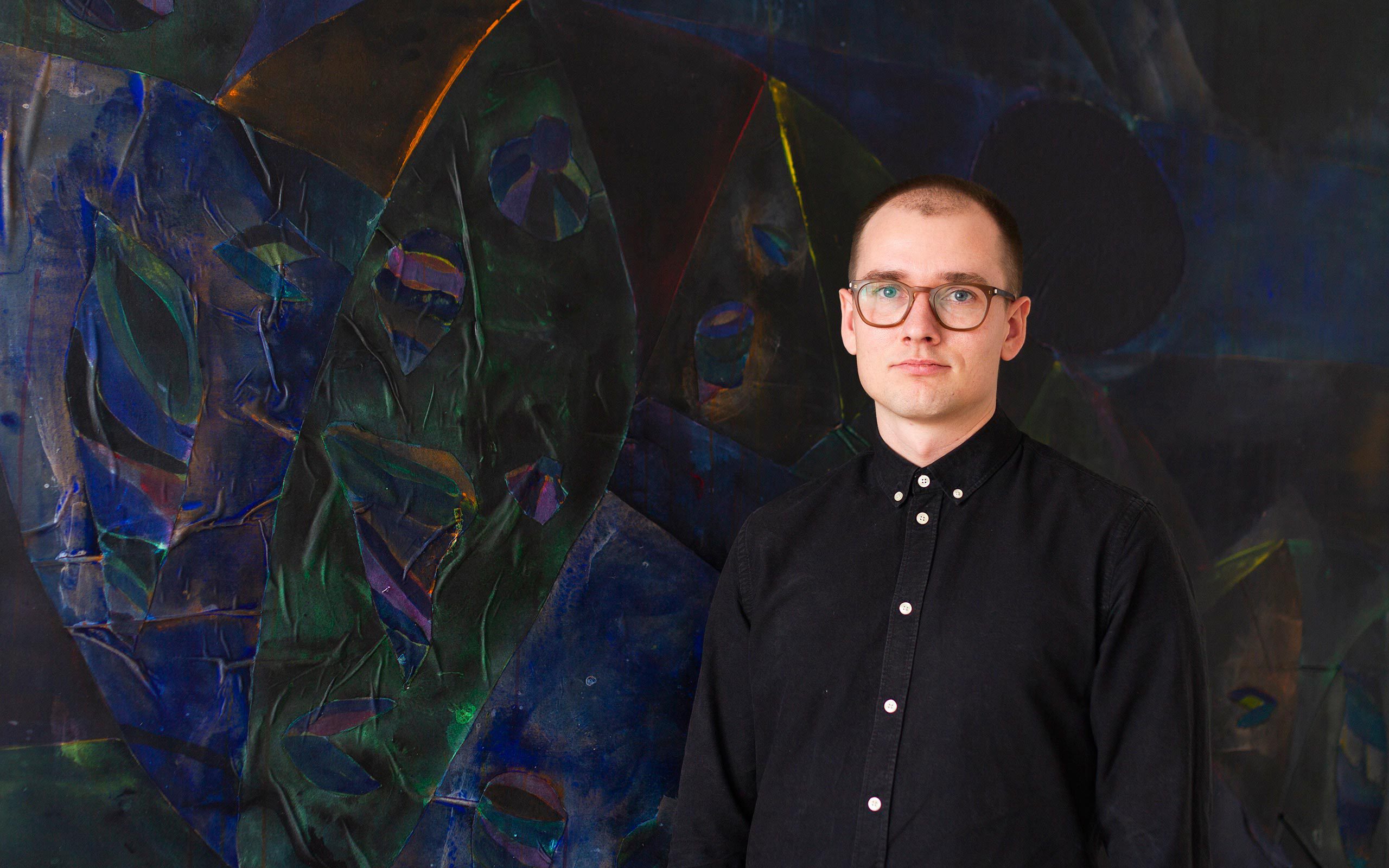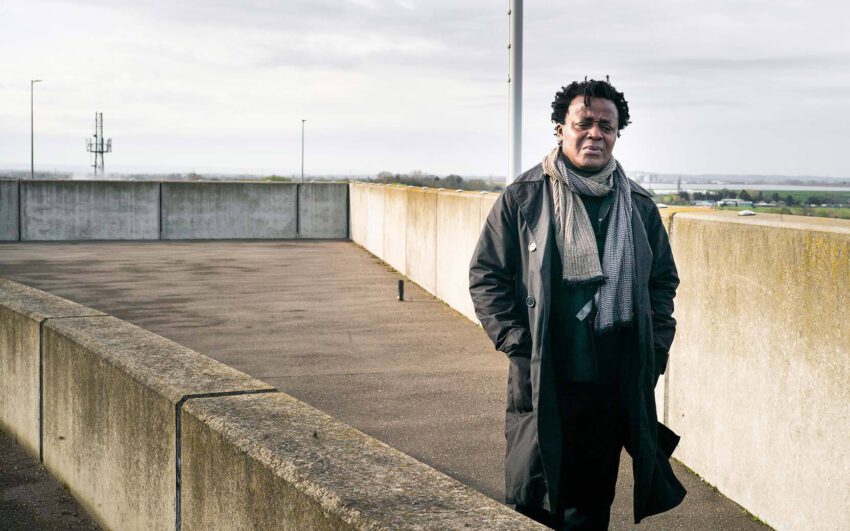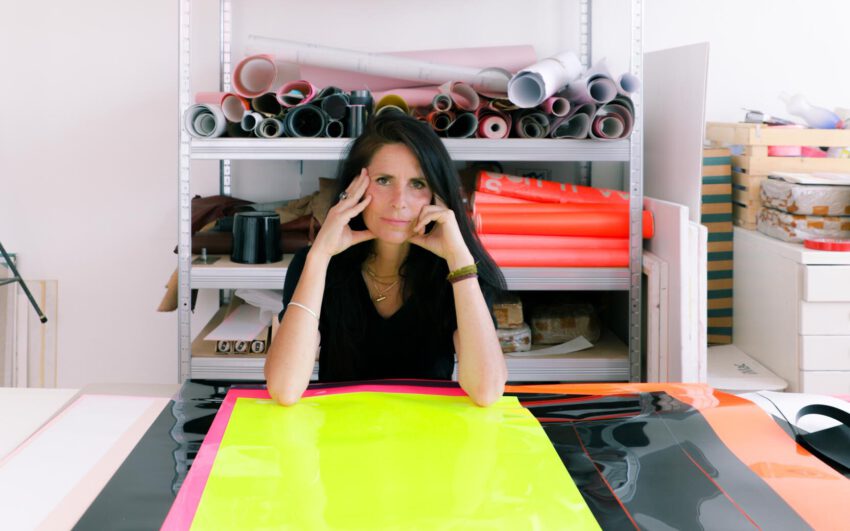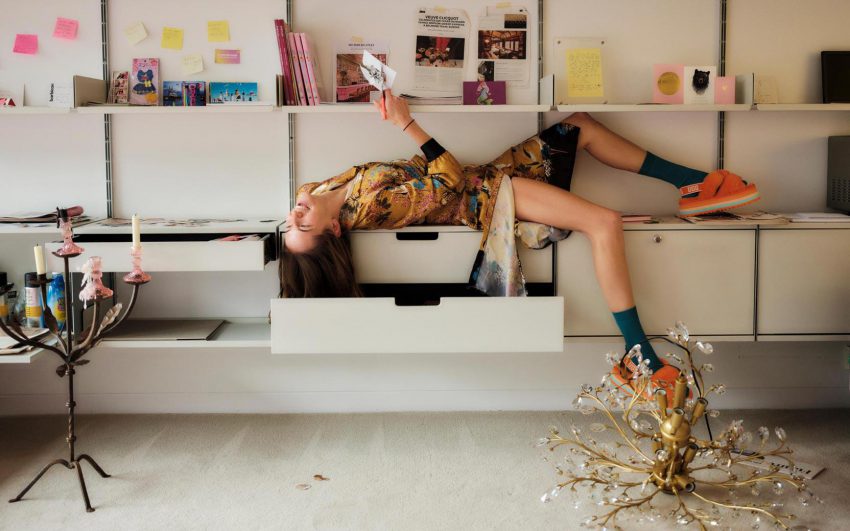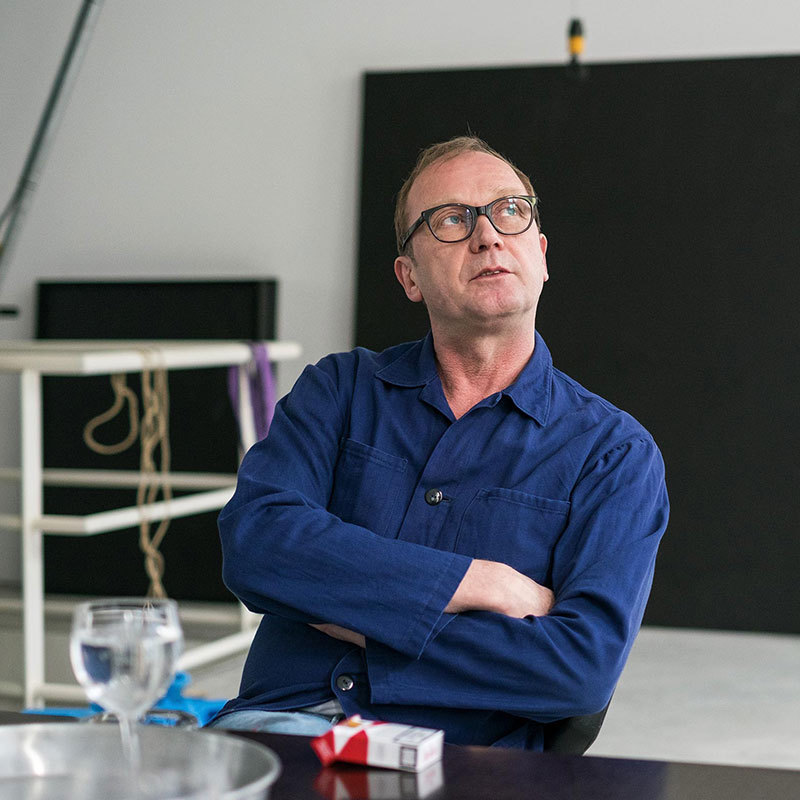The scene for contemporary art in Europe’s North is expanding and developing new dynamics as international collectors are watching the scene. With Nordic Notes we regularly cast the eye on the Nordic art and cultural scene, portraying its important actors.
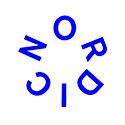
What started out as an interest of his father’s, turned out to impact the life of art collector Kristian Roland in a surprising way. Art became a focal point in his life, which the growing art collection in his home bears witness to. For Kristian, artworks are carriers of stories, the best of which challenge the spectator and serve as gateways for unexplored territory. Since he entered the art world at the age of 18, he has continuously sat foot on new soil in his discovery of the visual stories that take him off the beaten path. We met Kristian in his home in Aarhus for a talk about his personal journey and an art world in transformation.
Kristian, can you tell us about your way into the art world?
Around 2006, my father began collecting art. He had previously bought several pieces of classical art at auctions, but when he got to know about Eske Kath, who grew up in Christiansfeldt near where my father lives, the interest in contemporary art began growing. Therefore, we decided to drive to Aarhus, where Charlotte Fogh had a solo-exhibition with Eske Kath. We knew ahead that there were works available for purchase but also that they were in high demand, so we went there early and got a good spot in the growing queue in front of the gallery an early Saturday morning. Besides being a fun experience that marked the beginning of our journey as collectors, we left the exhibition with the artwork that the exhibition took its name from: Piles and Bones. We had a similar experience in Aalborg, where we spent an entire night in a queue in front of a gallery to purchase two works by Jacob Rantzau. Both of these purchases are marked by an element of a ‘hunt’ – the experience of being goal-oriented and chasing a work that has several ‘wooers’, and the excitement and potential release it brings. The same feeling arises when purchasing art at an auction, which is an adrenaline-fueled way of purchasing. Some collectors are skeptical towards this approach, but for us, it has been a nice way of acquiring artworks that have not been available elsewhere.
Speaking of auctions, you have actually been working as a trainee at Bruun Rasmussen Auctioneers of Fine Art and are currently doing a PhD at the University of Southern Denmark, exploring how Danish furniture design is mediated in a historical perspective. In that sense, your passion for art and design eventually led you to choose this field as a focal point of your professional working life. Did you ever consider another direction or was this a natural step for you in your discovery of the art world?
It was a relatively natural step for me to go in that direction. I have always let my interest be the deciding factor in my educational choice as well as in the jobs that I have had, which have always been a mix of work and leisure. In that sense, you could definitely say that my time in galleries and museums has formed my professional path. Where my interest in design is particularly focused on an academic study of the field through research, my curiosity for art is more subjectively founded. They complement each other, and are not entirely different, but there is a difference in my approach to them.
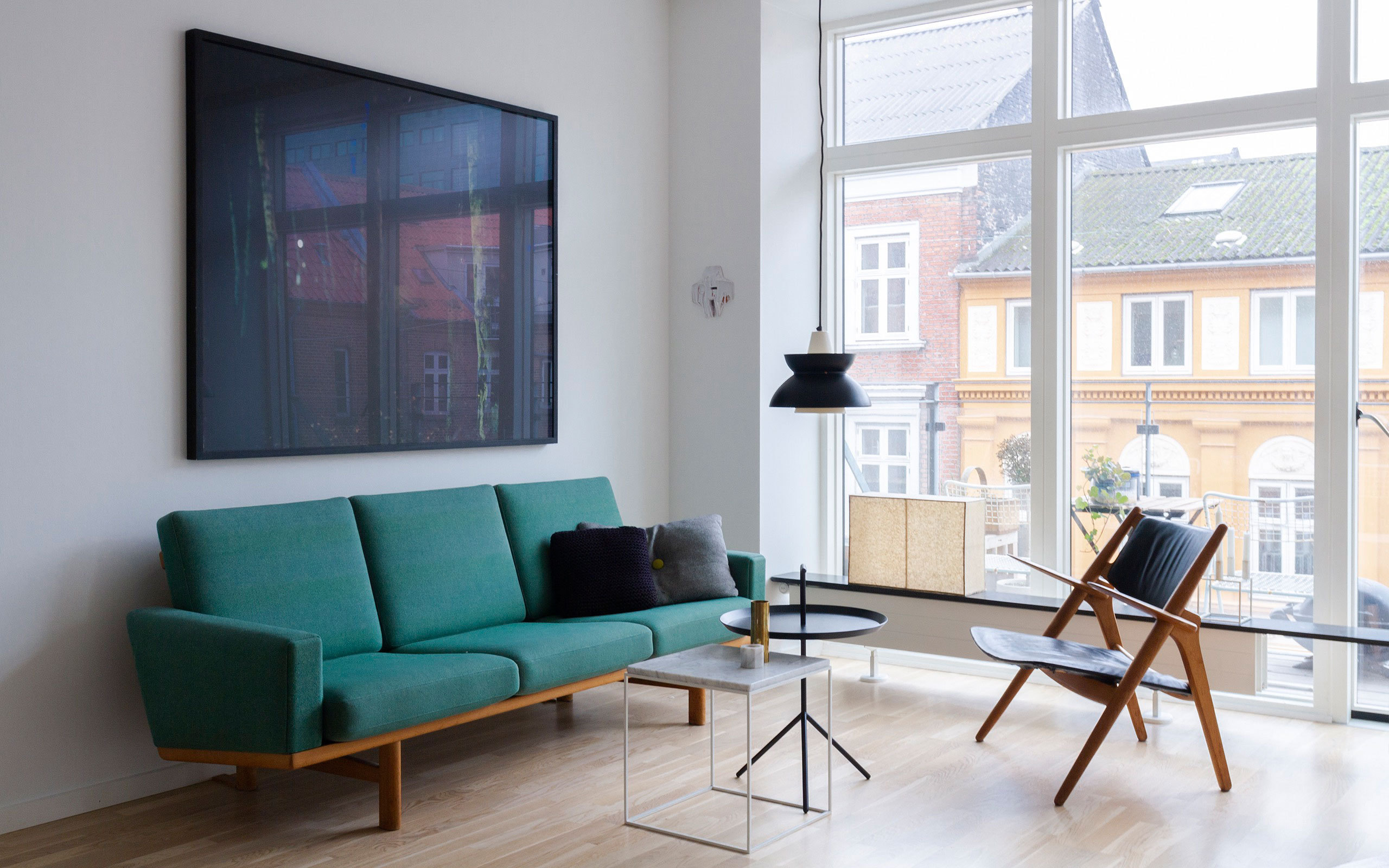
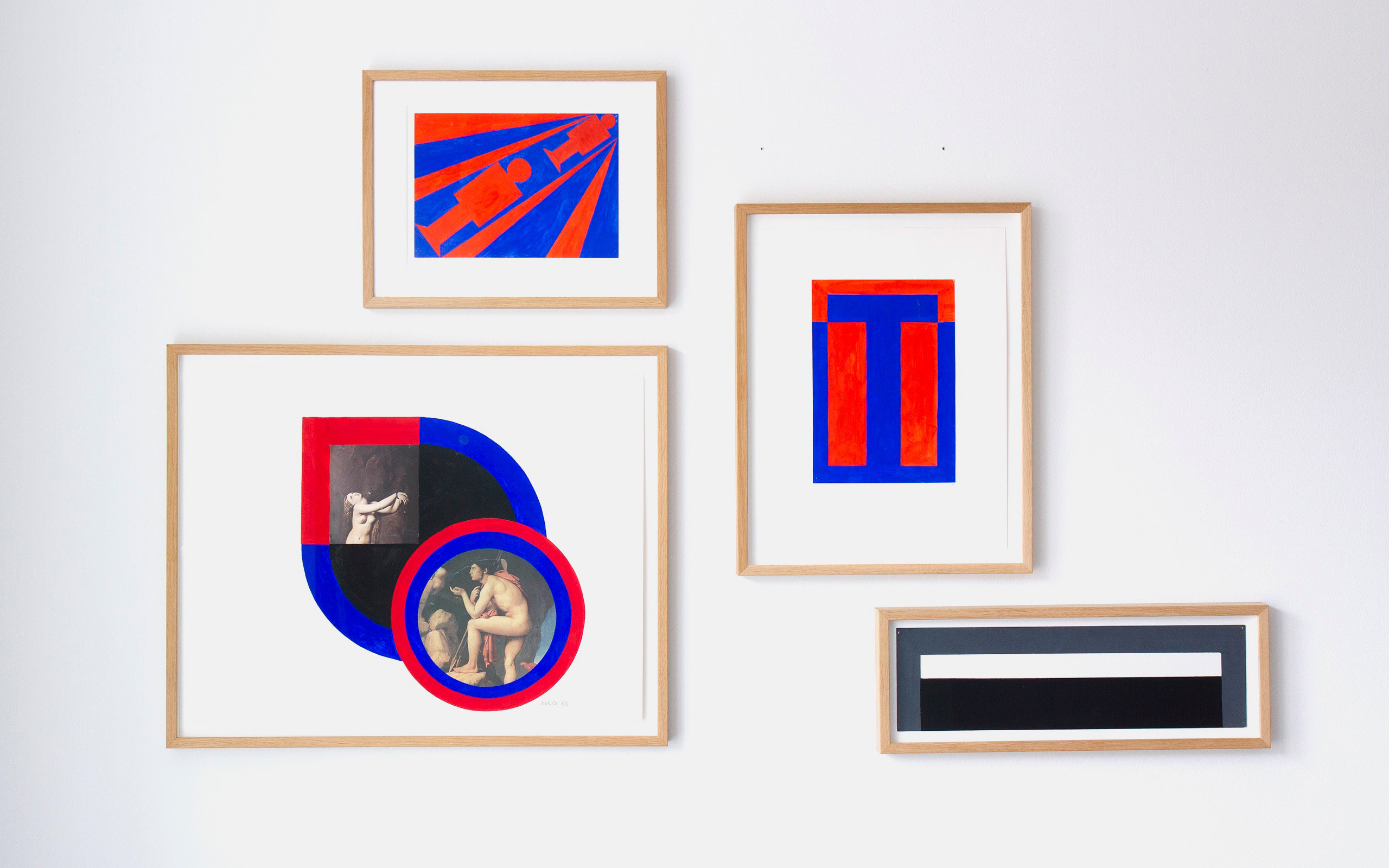
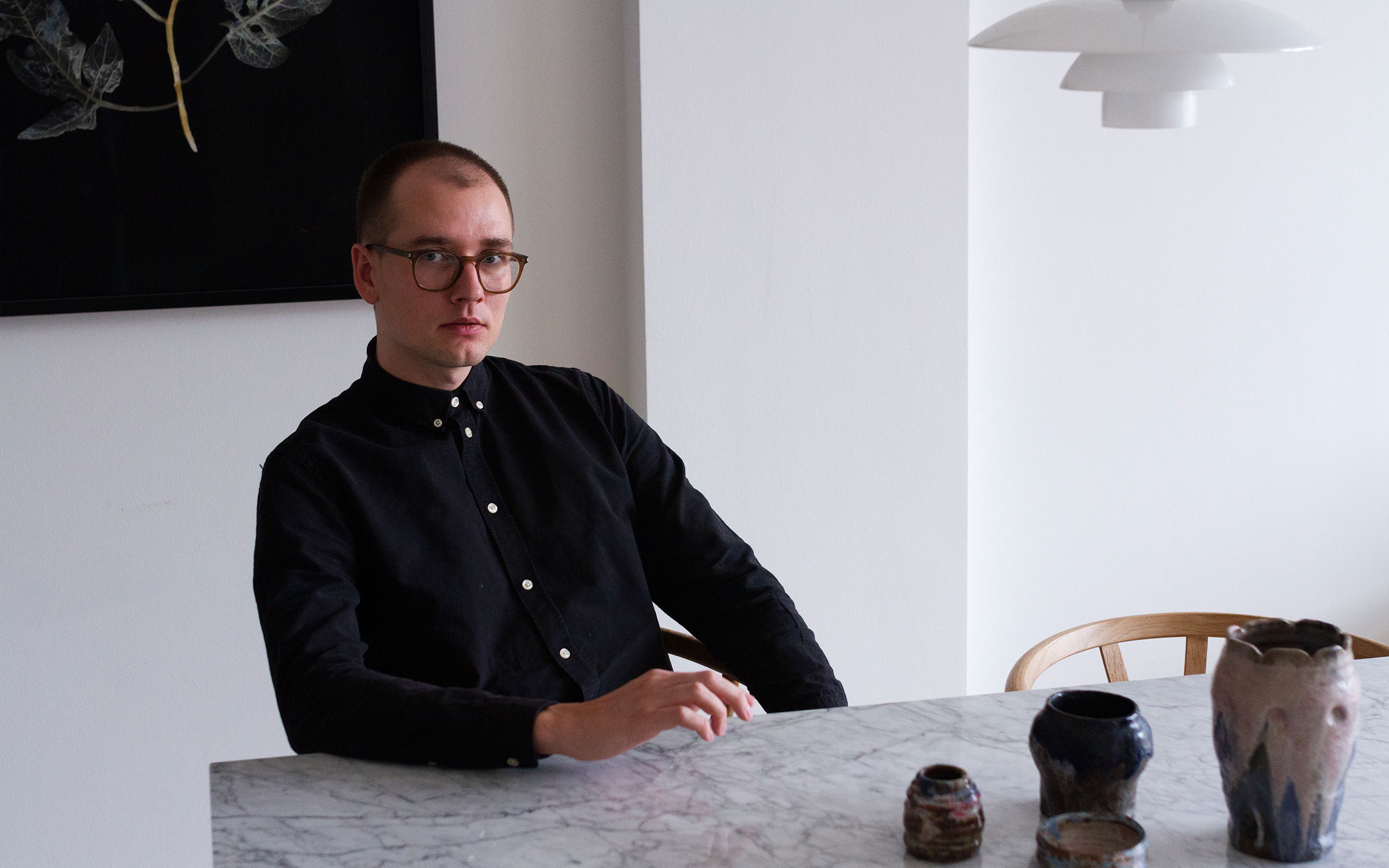
Let’s talk a bit about this subjective experience of art, tuning into your collection, which spans quite broadly, featuring both modern and contemporary art, abstract and figurative in a range of media. Can you tell us about the thoughts behind your collection and the way it has developed?
In the current collector climate, you see a prevailing tendency for the conceptual and minimalistic. In 2007, where my collection began taking shape, there was a turn towards figurative art, especially in painting. In this sense, one could argue that the collection represents different movements and style shifts in the history of art. The pieces in the collection stand as historical markers and carriers of a zeitgeist. Having said that, I believe that the best works in the collection keep having a certain energy and relevancy, which is often revealed after a certain timewise distance to their process of creation. Most of all, the collection reveals, of course, something about my personal relationship to art – paintings and photography have a special interest; they are the principal media in my collection. Photography is both immensely banal and part of pop culture and enormously elitist and advanced, and I definitely believe that it can be justified either way. Photography challenges our way of viewing and reproducing the world through the stories it tells.
This leads to my next question, which takes the following quote from you in a recent interview with Larry’s List as its point of departure: “On the whole, a story needs to be told”. You elaborate on this statement? In your view, what is a good story in an artwork?
A good story is always built around interesting, off-beat or challenging ideas and thoughts that the artist channels into the artwork and which in some way presents unknown territory to the spectator. In conceptual works, you have to get to know the artwork more than in the case of, say, a figurative work, where the components are easier to decode. I think that an artist such as Albert Mertz is interesting because his work tells us something fundamental about imagining and communication in a work. Another artist, John Knuth, puts the process in the center – as is the case with our artwork Brinch’s Security, which is built from fly-excrements, together creating a vibrant, almost hypnotic expression. In general, a good story can take many different shapes, which has a lot to do with the outlook of the spectator. We all read something different into art, and what is a good story for me might only be a decent story to you.
Speaking of how to look at art, I’ll turn to the former gallerist David Risley, who in an interview with Kunstkritikk said that people no longer look at art: “Everyone claims they do, but I can tell you who does and who doesn’t. And basically no one does. It’s an incredibly small amount of people who do”. As a young collector, how do you see this?
If, for example, the galleries want to have more visitors, it is important to make the gallery a space for experiences – with art as the pivotal point. David Risley is very aware of this and brilliant at doing it. There are, however, many galleries that both fail in their role as a mediator and, at the same time, have a very arrogant understanding of the art experience. You can still walk into a gallery in Denmark and meet the type of assistant, who sits behind a large desk and stares fixated on his or her MacBook without paying any attention to the visitor – that does not exactly create a basis from which to use the gallery as a space of experience. You can say that the evolution of the use of social media makes the art more accessible as a commercial and cultural phenomenon. Social media has an enormous potential for the galleries and is not exclusively an obstacle for having visitors, but the galleries also carry a responsibility to make their exhibitions attractive to a new audience. Sadly, there are probably also galleries that do not care a lot about numbers of visitors and communication.
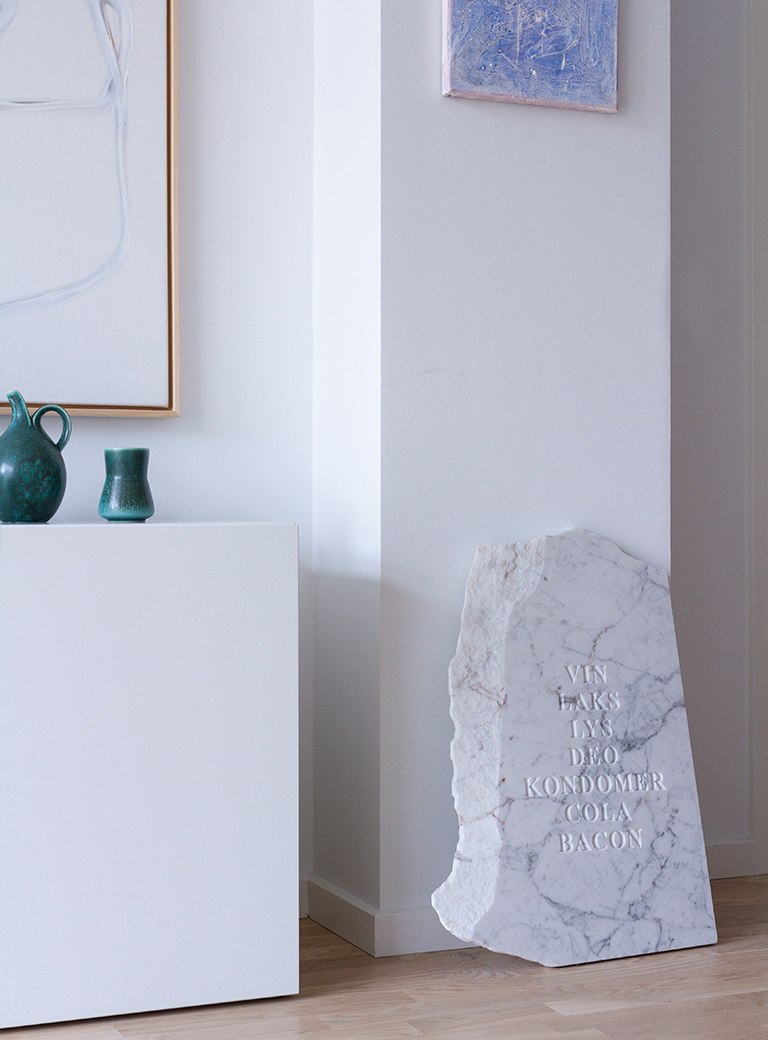
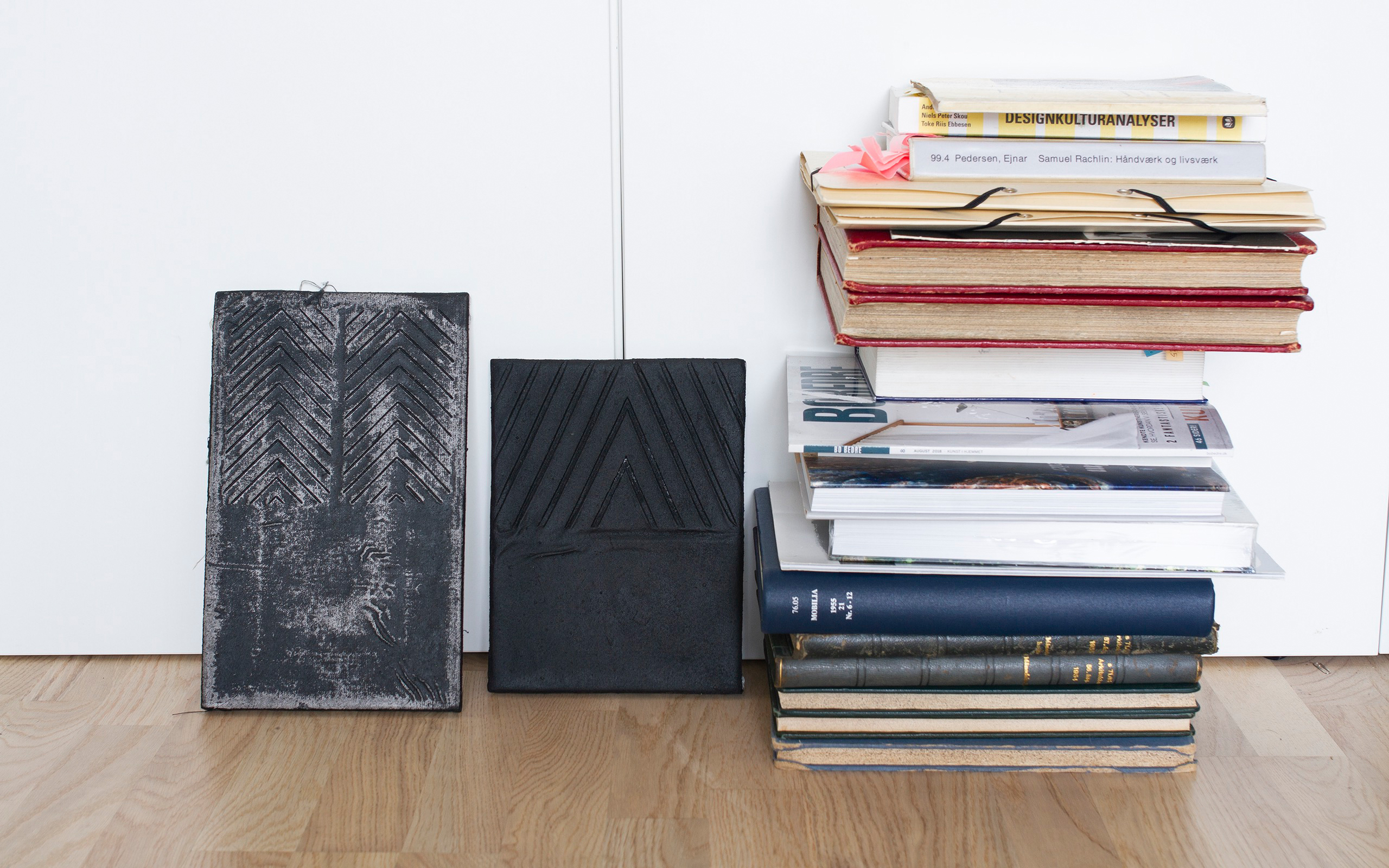
You are based in Aarhus, Denmark, a city of around 273.000 inhabitants. Do you ever consider moving to a bigger city with a richer and more diverse art scene and not least the opportunity to experience more exhibitions and works up close?
I definitely miss out on certain things because I do not live in Copenhagen, which has a far more dynamic art scene than Aarhus, and we do have thought about moving to a larger city several times. If time was not a hinderance, I would like to take the trip to Copenhagen more often, but this is one of the instances where social media really does justice to itself. Because of social media, I can see the exhibitions and get a sense of them, and at the same time, it stimulates you to question the fundamental premises for an exhibition and how we experience it. Luckily, several museums, among them ARoS, have a rising number of visitors, which means that more and more people see the physical art experience as an attractive culture event.
You mentioned social media as a way to experience an exhibition from afar and, truly, digitalization has introduced completely new methods to navigate in the art world. Besides serving as a tool to keep updated on current exhibitions, how do your use of social media influence your experience as a collector?
My Instagram profile, which I primarily use as a channel to share my art experiences, has definitely given me a more solid connection to the art world. I have Artland as a tool to create an overview of trendsetting collectors and young artists. That helps making the stream of communication more manageable, which is definitely a big help when time is running short. The heightened accessibility is a big advantage and a joy to many, but it also causes certain difficulties. I think, for example, that several gallerists spend a lot of time considering social media and its effect on people’s choice of seeing an exhibition live or through a screen. So, there is both pros and cons when it comes to social media’s influence on the art world ecosystem.
In continuation of your thoughts about the art world ecosystem. What’s the biggest change you think we’ll see in the market in the next 5 years?
It is always difficult to predict the future, and there are many different players and positions influencing the development. However, I do think that the digital evolution will continue to have an influence and create changes in the way we view and access art. Both consumers of and contributors to the art market will most likely experience a more professionalized use of media in the future – as a way of experiencing, buying and selling art. A format such at the art fair is not a particularly sustainable construction in a world where the climate crisis is becoming more and more of a concern. So, perhaps we will have to rethink this format.
If we move from a macro to a micro level - how about the future of your personal collection?
Personally, I have begun looking back in time instead of chasing the next shooting star, which is, after all, a typical label and goal for the 21st century art collector. I think that it is wonderful to be able to supplement my collection of young artists with works by an older generation of artists that began creating art fifty years ago that still holds up to this day. The interplay of past and present adds a unique nerve to my collection.
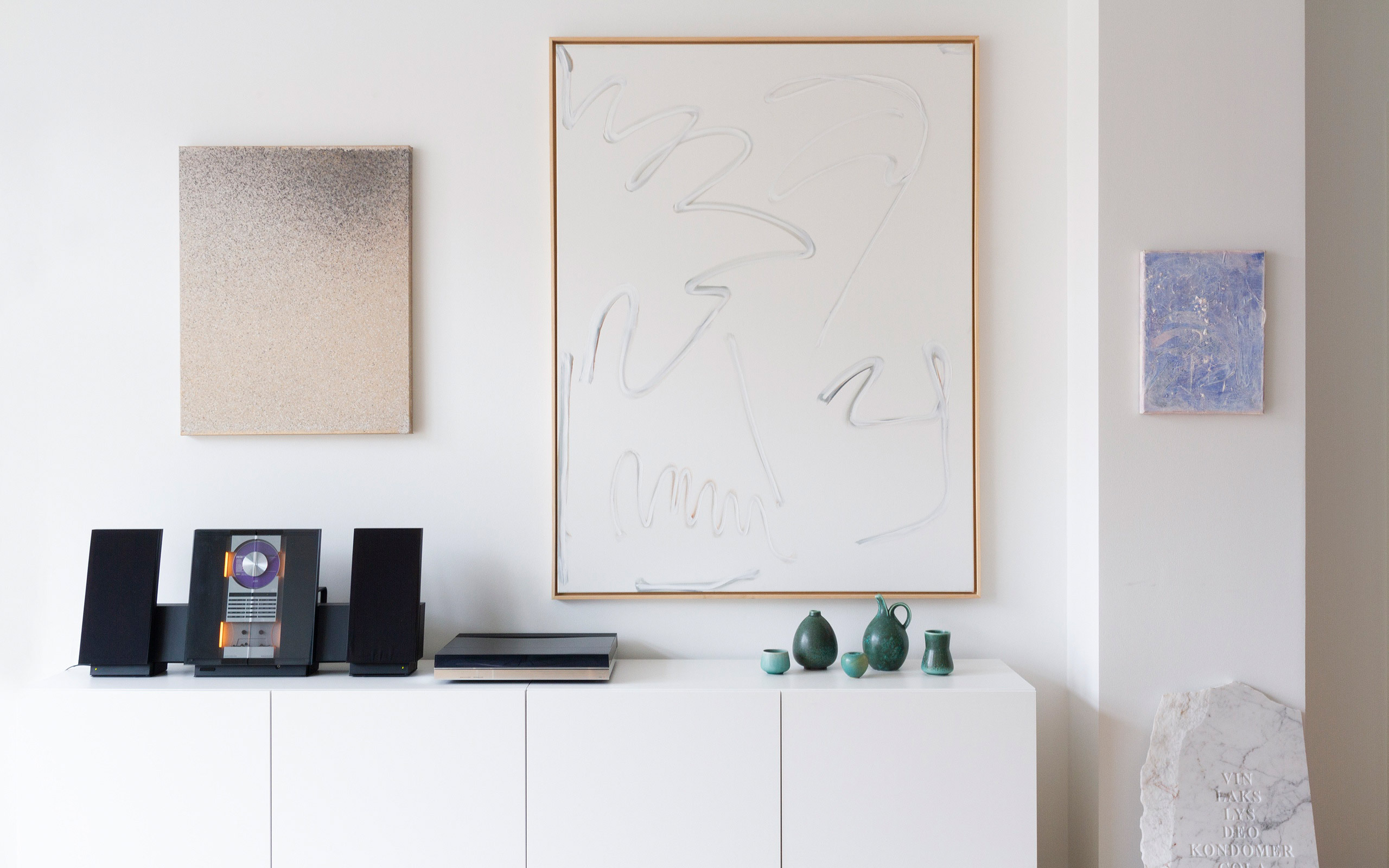
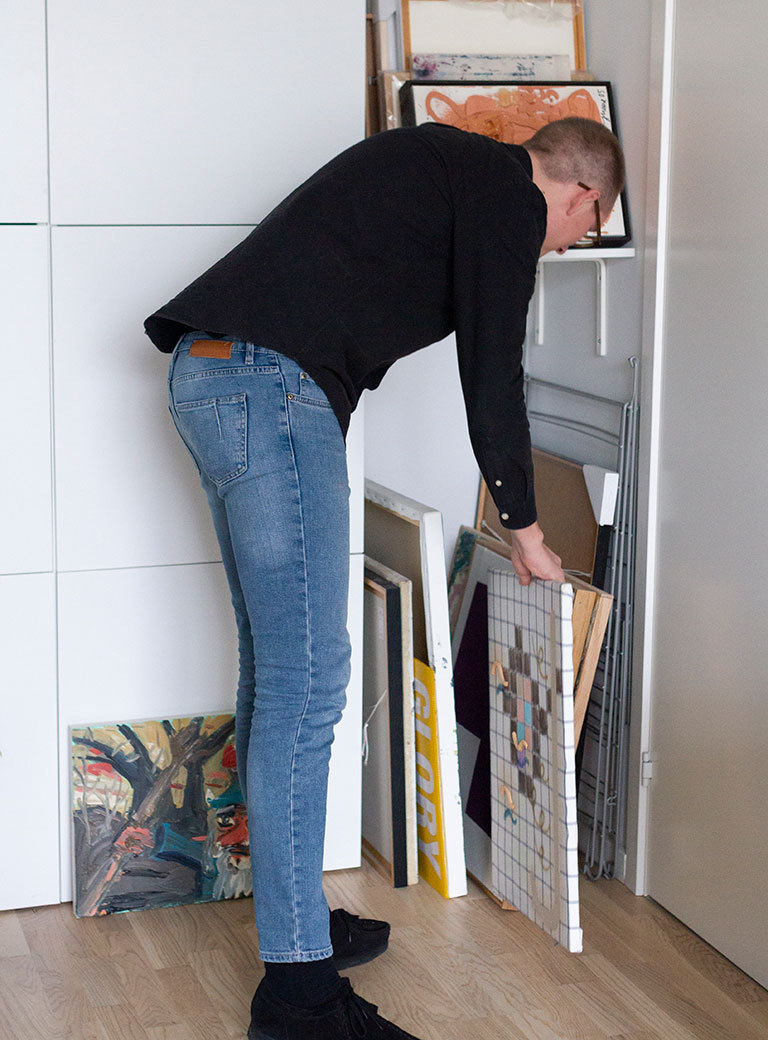
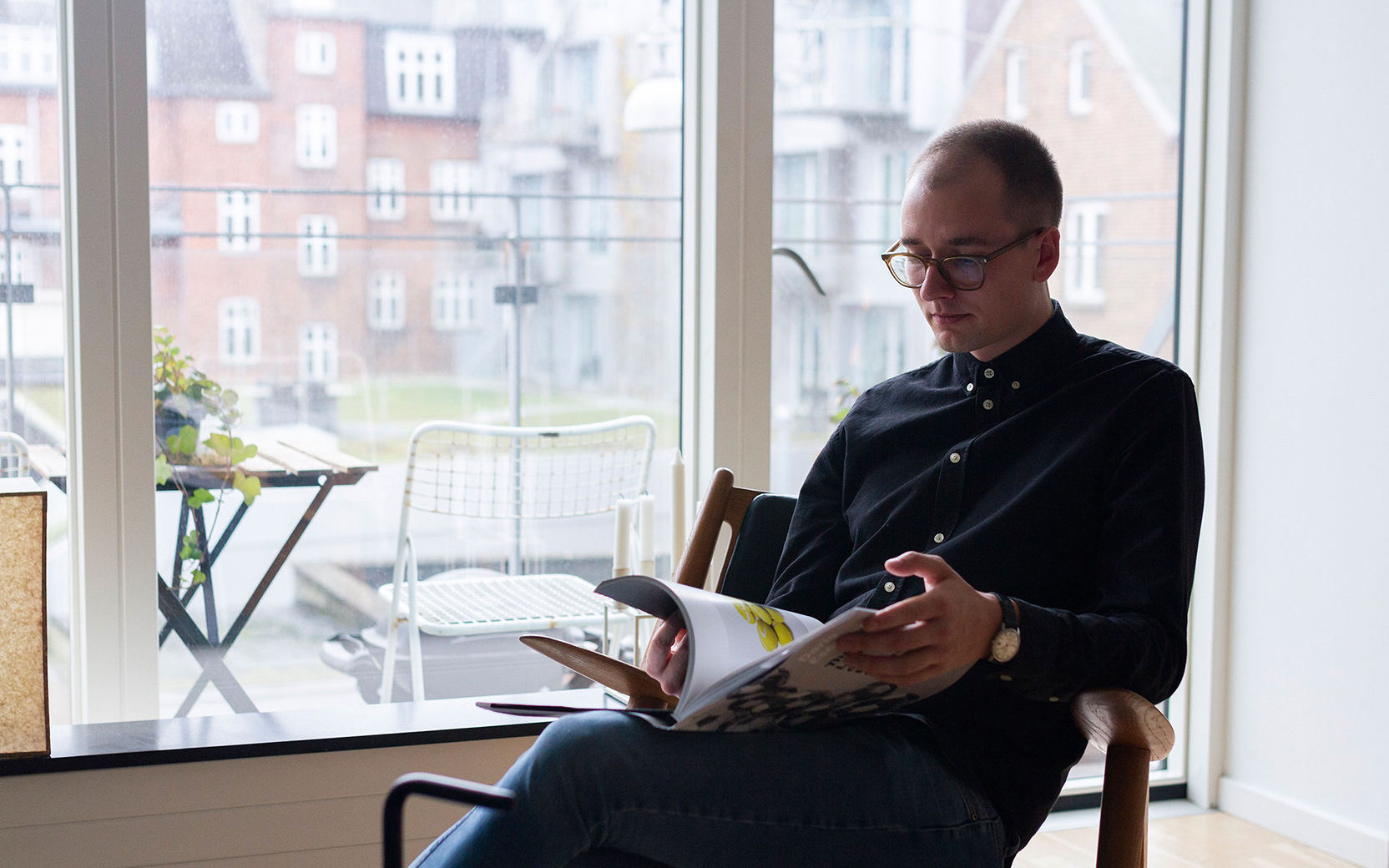
Interview: Anne-Lill Bøndergaard Brok
Photos: Luna Lund Jensen
We have teamed up for this story with our friends from Artland, an app to discover contemporary art and to connect with a community of collectors and galleries worldwide.


